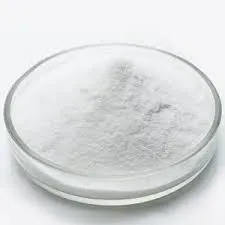
ធ្នូ . 19, 2024 15:21 Back to list
Understanding the Advantages of Redispersible Polymer Powders in Construction Applications
Understanding Redispersible Polymer Powders A Versatile Component in Construction and Beyond
Redispersible polymer powders (RDPs) have emerged as vital components in various applications, particularly within the construction and building materials industry. These fine powders, which are often derived from synthetic polymers, are designed to be easily redispersed in water, leading to the formation of stable polymer dispersions. This characteristic allows RDPs to influence the properties of the final products significantly, making them indispensable in formulations such as cementitious materials, adhesives, and coatings.
What Are Redispersible Polymer Powders?
RDPs are typically produced by spray-drying polymer emulsions, resulting in a free-flowing powder that can be stored for extended periods without degradation. When mixed with water, these powders redisperses to form a viscous liquid that can be integrated into a variety of construction applications. Some common types of polymers used include ethylene-vinyl acetate (EVA), styrene-butadiene (SB), and polyvinyl acetate (PVAc), among others. Each type of polymer powder has unique properties tailored to specific applications.
Applications of RDPs
1. Cementitious Systems One of the primary applications of RDPs is in cement-based formulations, such as tile adhesives, repair mortars, and renders. Incorporating RDP into these formulations enhances the flexibility, adhesion, and water resistance of the products. This increased performance is particularly beneficial in environments prone to movement and moisture, such as bathrooms and kitchens.
2. Adhesives In the adhesive industry, RDPs contribute to improved bonding strength and durability. They allow for the formulation of pressure-sensitive adhesives and construction adhesives that can perform in a variety of demanding conditions. The ability to create a robust bond with different substrates, including porous and non-porous materials, is enhanced through the inclusion of redispersible polymer powders.
3. Coatings In paint and coatings applications, RDPs are used to improve the film formation and adhesion properties. They allow for the development of high-performance coatings that possess excellent water resistance, mechanical strength, and flexibility. This is particularly important in protective coatings for infrastructure that require longevity and durability against the elements.
redispersible polymer powder

4. Specialty Applications Beyond construction, redispersible polymer powders find use in various specialty applications, including textile coatings, paper coatings, and even in the production of certain types of plastics. Their versatility makes them suitable for adapting properties based on specific industry needs.
Benefits of Using RDPs
The integration of redispersible polymer powders into various formulations offers numerous advantages
- Enhanced Performance RDPs improve the mechanical properties of formulations, including tensile strength, flexibility, and impact resistance. This leads to products with a longer lifespan and better performance in real-world applications.
- Improved Workability The inclusion of RDPs often results in better workability of the materials, making them easier to apply. This ease of use is crucial for contractors who need materials that can be worked with efficiently on site.
- Environmentally Friendly Options Many RDPs are designed to be environmentally friendly, with low VOC content and reduced environmental impact. This aligns well with the growing demand for sustainable building materials.
Conclusion
Redispersible polymer powders represent a significant advancement in material science, contributing to the formulation of high-performance products across various industries. Their ability to enhance the properties of cement-based systems, adhesives, and coatings highlights their versatility and importance in modern construction. As the industry continues to innovate and prioritize sustainability, the role of RDPs will likely expand further, providing solutions that meet both performance demands and environmental considerations. Understanding the benefits and applications of RDPs can empower manufacturers and builders to make informed choices in material selection, ultimately leading to superior outcomes in their projects.
-
Versatile Hpmc Uses in Different Industries
NewsJun.19,2025
-
Redispersible Powder's Role in Enhancing Durability of Construction Products
NewsJun.19,2025
-
Hydroxyethyl Cellulose Applications Driving Green Industrial Processes
NewsJun.19,2025
-
Exploring Different Redispersible Polymer Powder
NewsJun.19,2025
-
Choosing the Right Mortar Bonding Agent
NewsJun.19,2025
-
Applications and Significance of China Hpmc in Modern Industries
NewsJun.19,2025







